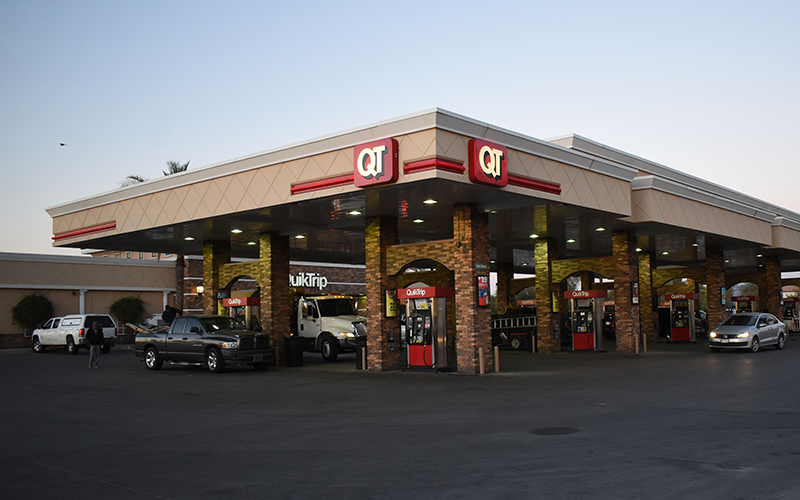
As of Monday, April 25, unleaded regular gasoline in Arizona averaged $4.55 per gallon, above the national average of $4.123, according to AAA. The cheapest gas is found in Pima and Apache counties. (Photo by Hope O’Brien/Cronkite News)
LOS ANGELES – Gas station owners say they’re often branded as profiteers when prices surge, but with taxes, overhead, credit card processing and other expenses, they’re not raking in the gas money.
Retailers say they only earn a profit of about 10 cents on every gallon of gasoline sold, if they make a profit at all, according to the Association for Convenience & Fuel Retailing, a lobbyist group for fuel retailers.
Today, the average price for a gallon of gas nationwide is more than $4 – which is almost double what it was a year ago, according to AAA. As the cost of crude oil keeps rising, gas station owners are losing more of their profit margins.
Crude oil is the largest determining factor in how much we pay for gas, according to the U.S Energy Information Administration. The price of crude depends on global supply and demand but is heavily affected by geopolitics, financial markets, political events and weather. And with inflation high, Arizona residents are anxious.
Gas stations operate by selling fuel with a low profit per unit and depend on high sales volumes to make a profit. They also can sell fuel at a higher price but would sell a smaller volume, the Association for Convenience & Fuel Retailing says.
Prices also are affected by contracts that retailers sign for fuel shipments. If a retailer has a long-term contract, the association says, it may be beneficial when supplies are tight and demand is higher. Otherwise, retailers will turn to the open market for fuel, which can be limited or have premium prices.
Refining costs tend to vary by state because of such factors as environmental regulations, demand, processing technology and seasonal blends. According to the U.S Energy Information Administration, the cost of fuel in summer is typically higher because that’s when more people are traveling.

(Graphic by Lauren Lively/Cronkite News)
This is also where Arizona sees its fuel markup because there are no refineries in the state. Arizona receives fuel transports from Southern California, New Mexico and Texas.
Refining costs and the price of taxes typically stay about level, according to the U.S Energy Information Administration. The cost of crude oil is about 61% of the price we see at the gasoline pump, and refining costs and taxes sit at about 14% each. After the remaining 11% is spent on distribution and marketing, retailers don’t see much profits, if any.
Regardless of the pricing strategy for fuel, most retailers earn most of their profits through the purchase of items inside the stores, such as hot dogs and slushies.
For daily updates on the national fuel average or the average gas price for your state, see AAA Gas Prices for more information.
